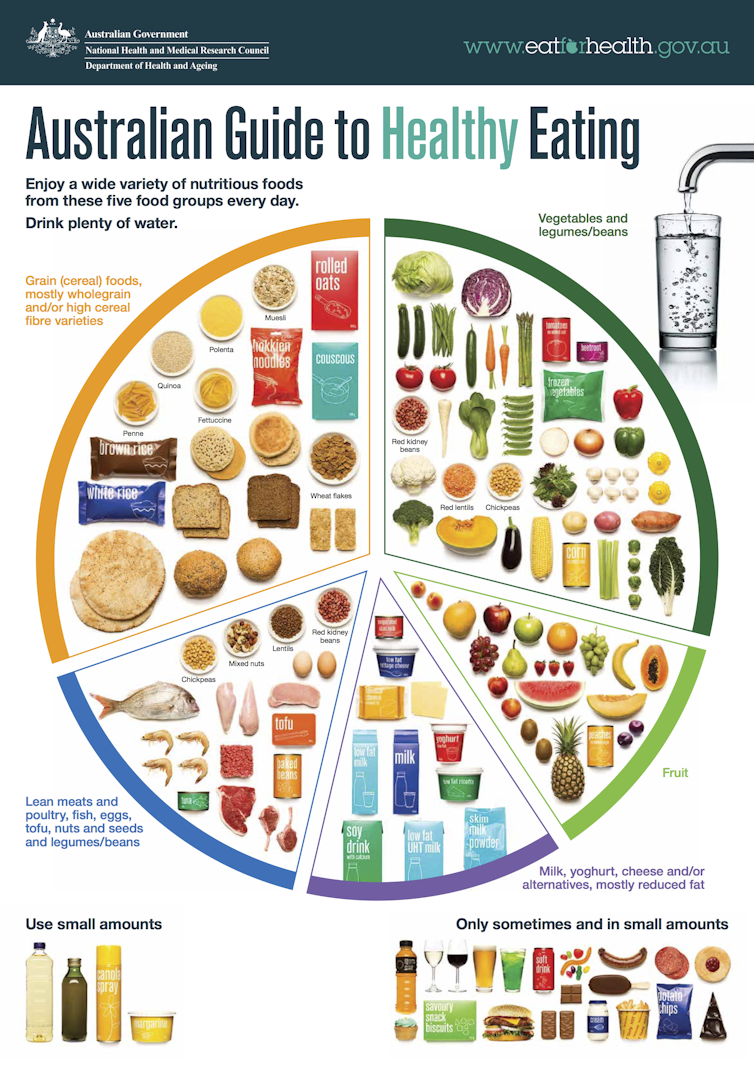The government has started the second phase of its awareness campaign for Australia’s year-old health star food-rating system. The A$2.1 million campaign is aimed at educating grocery buyers about how to shop for healthy food and encouraging the food industry to adopt the voluntary system.
But it’s unlikely the campaign will fulfil its first aim because health stars are predominantly being used by the food industry to market highly processed food products. It would be unfortunate if it was successful in its latter aim because unless we change the way the system currently works, consumers will be the losers.

A good purpose
It has only been a year since the federal government finally introduced the health star rating system after a long and fraught process. The industry is implementing the system over five years and a review is planned for next year.
Under the system’s nutrient profiling criteria, individual packaged foods are rated on their composition. Foods receive “baseline” (or negative) points for the amount (per 100 grams or 100 millilitres) of saturated fat, total sugars, sodium and energy. And they receive “modifying” (or positive) points for the amount (again, per 100g or 100mL) of protein, fibre, fruit and vegetables they contain. Points are then converted to a star rating, from half to five stars.
The system is supposed to help consumers discriminate between similar foods within the same food category that contain different amounts of undesirable ingredients. It should, for instance, help compare two loaves of bread in terms of their salt content.

The health star rating system is also supposed to provide an incentive for manufacturers to reformulate their products. In terms of our previous example, it should encourage manufacturers to provide bread with less salt. But because it was developed through compromise between government, industry, public health and consumer groups, it has some inevitable design and implementation limitations.
Badly designed
Its main design limitation is that it simplistically frames the cause of, and solution to, dietary imbalances in terms of nutrients. This is fundamentally at odds with the latest nutrition advice, which uses a food-based approach.
Consider the Australian Dietary Guidelines, a nuanced set of eating rules based on the latest nutrition research. These encourage enjoyment of a variety of nutritious foods from all five major food groups (see below), and limiting or avoiding highly processed, energy-dense and nutrient-poor “discretionary” or junk foods and drinks.

Food consists of a complex matrix of nutrients and non-nutrient components, which interact in multiple ways to influence health. Because people eat foods rather than nutrients in isolation, it makes more sense to give nutrition advice based on whole foods.
But the health star rating system looks at nutrients in isolation. And simply awarding stars irrespective of whether a food is from the “discretionary” category is resulting in instances where foods, such as confectionery, are getting higher ratings than five-food-group foods, such as yoghurt.
Badly implemented
The system’s main implementation limitation is that because it’s voluntary, food manufacturers can decide whether a product will display health stars or not. Understandably, although manufacturers might be happy to display stars on foods that attract between two and five stars, they are less likely to put one or half a star on their products.

So what the health star rating system ends up doing is encouraging marketing of unhealthy or discretionary foods, as healthy options. Discretionary foods are packaged and highly processed and can have their nutrient composition reformulated to increase stars. Manufacturers of potato chips, for instance, might lower their fat or salt content to gain a higher star rating. But chips with half an extra star are still a discretionary food.
Part of the problem is that the campaign’s main message – “the more stars the better” – is misleading. Many of the items from the five food groups (see above) are not packaged, so they don’t display health stars. The actual health message is to eat more of these foods; it’s not that we should try to eat food with more stars.
What the health star rating system ends up doing is communicating a de facto approval or giving a halo effect to the labels of products that carry stars. People tend to view any visual health information on food as at least suggesting it’s healthy. So packaged foods that carry the star symbol, even if only half a star, could be implied to be healthy.
Making it better
Fixing the system’s design limitations will require placing nutrient profiling within the context of the whole food so consumers are encouraged to choose predominantly from the five food groups. In practice this would mean stars should be available for only five-food-group foods. Health warning symbols should be displayed on discretionary foods.

This change would provide food manufacturers with stronger incentive to reformulate discretionary foods to avoid attracting health warning symbols on their product labels.
And fixing its implementation limitations will require mandating the health star rating system – and warning symbols – across all foods that carry a label. We would also need a regulatory body to manage the system’s operation.
These remedies would help make the system consistent with the latest evidence from nutrition science. And it would make the education message simpler. Most importantly, consumers will be able to have confidence that they can use the health star rating system to compare all foods for their relative healthy properties.

